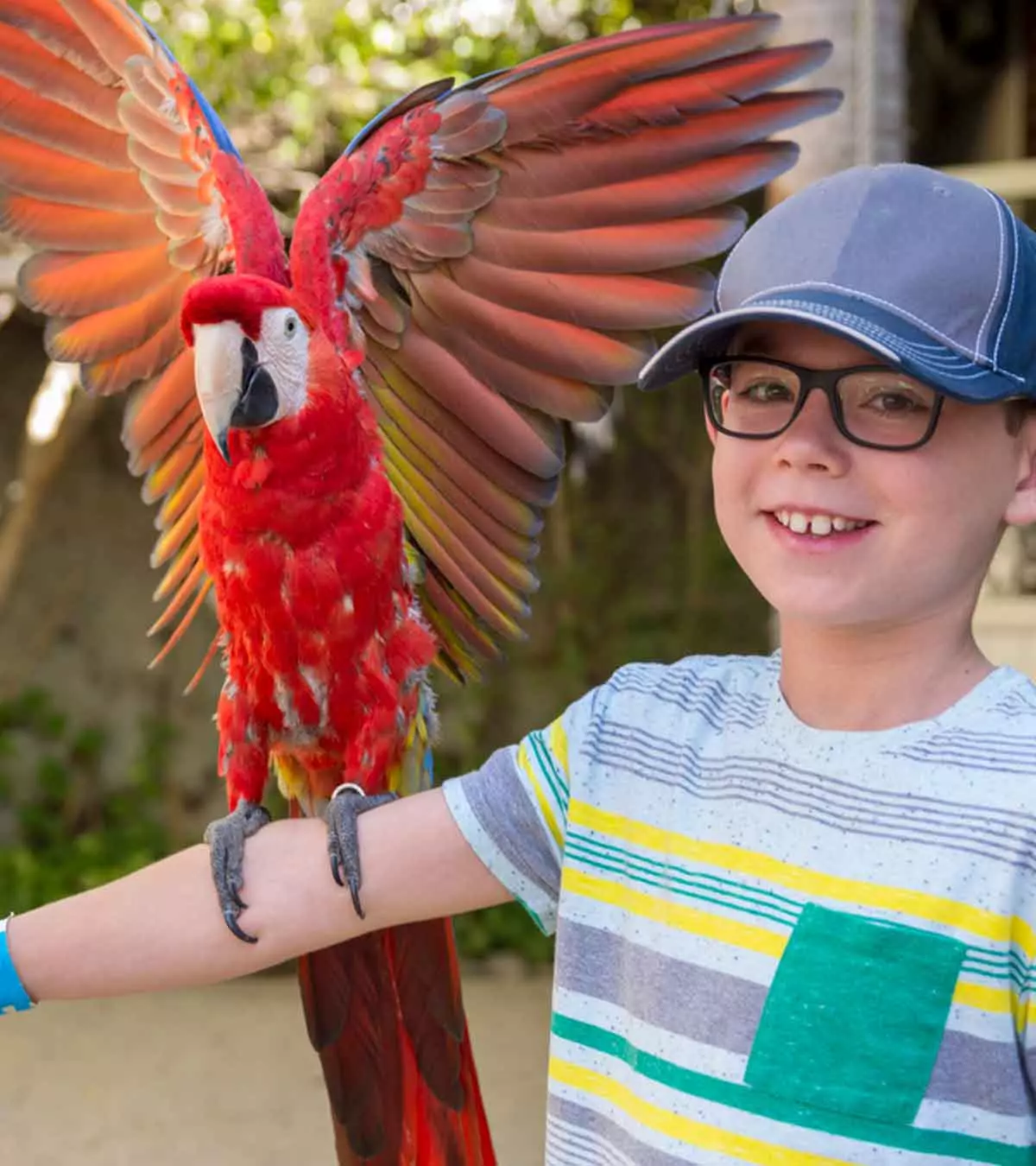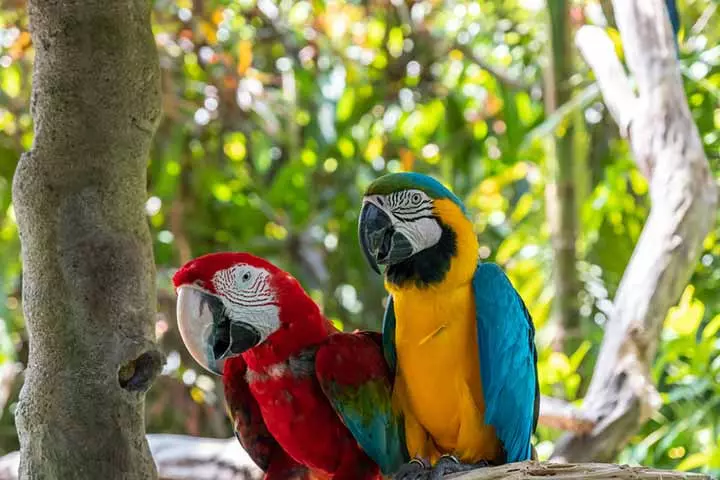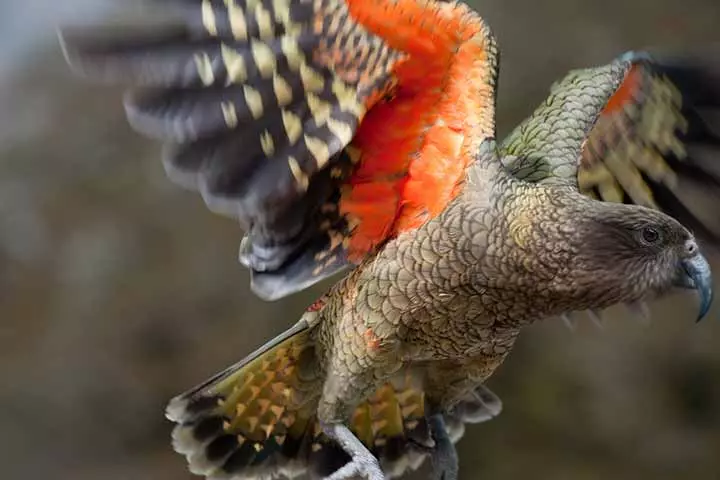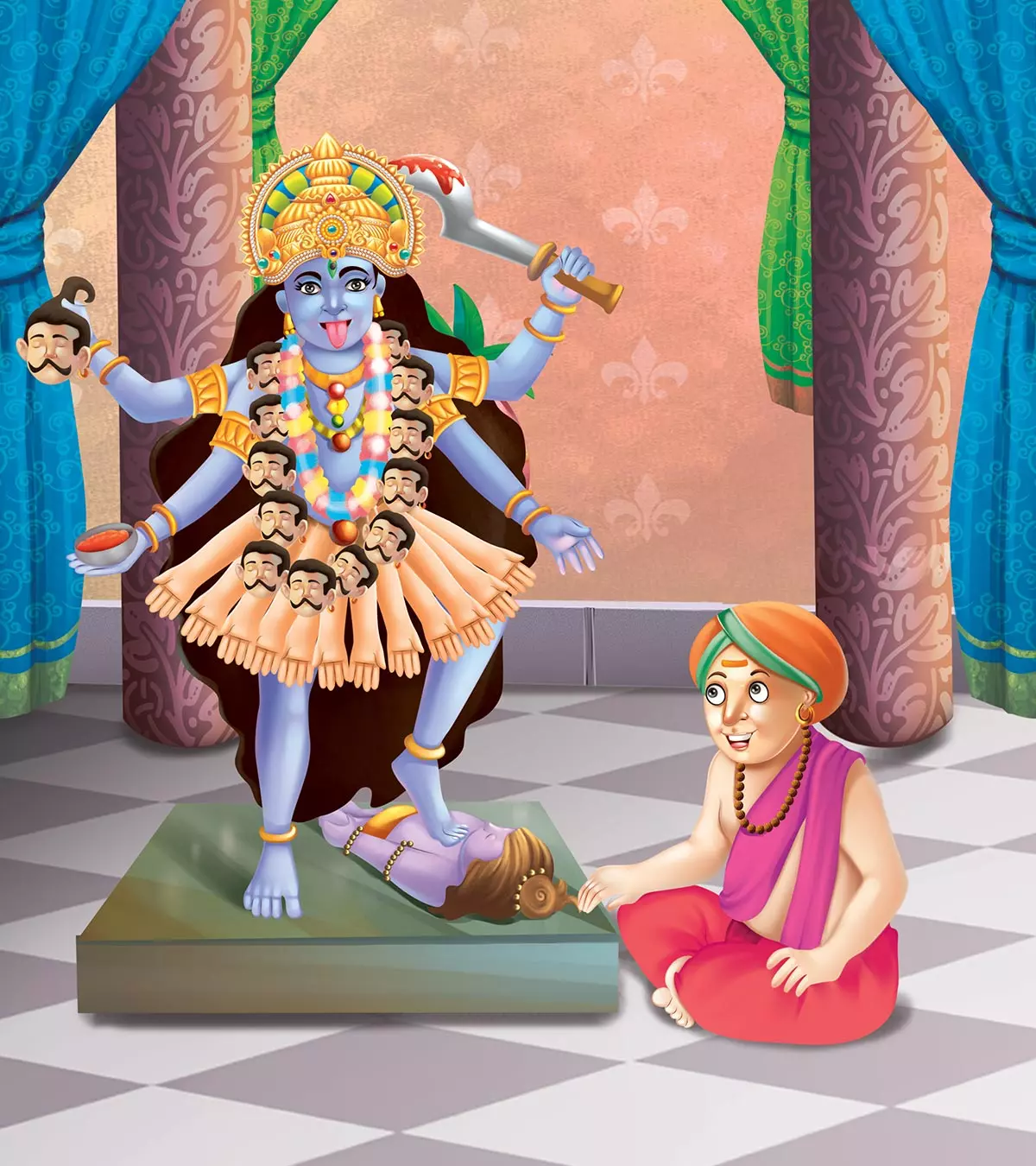
Image: iStock
Getting a parrot for kids is a popular pet option. Not only are they astonishing to look at but also entertaining play companions. In addition, parrots are known for their unique talent for mimicking various sounds. This is quite an unmatchable and endearing quality that makes them stand out from other birds. Moreover, they are clever and can follow instructions and respond when prompted. They can also teach children to be responsible and care for living things.

There are several facts about parrots that may amaze you. So read on as we discuss some intriguing facts about parrots that you could share with your children.
Key Pointers
- Parrots are widely known for their ability to mimic words.
- Large parrots like the Kakapo can have a lifespan of 95 years.
- Parrots have more than 400 taste buds on the roof of their mouth.
- Learn facts about their colorful appearance, different species, and many more as you scroll down.
Interesting Information About Parrots For Kids
When you introduce your child to a parrot, you will likely be bombarded with a ton of questions regarding this fascinating feathered friend. You may or may not know the answers to all the questions. Here are some basic but important nuggets of information about parrots your child will love to learn.
- Body: A parrot has a slender body with a relatively large head and a small neck. Its curved beak is short but strong enough to break open the tough shell of a walnut. It also fights and defends itself with its strong beak. Its tongue is large and helps it grab seeds and fruits. Parrots have strong legs with zygodactyl feet. Their feet have four toes with one pair facing forward and the other pair facing backward. Additionally, the talon of each toe is sharp, aiding parrots in their ability to grasp objects and climb effortlessly. This structure of their legs gives them a firm grip, allowing them to perch securely on tree branches and remain stable even in windy weather.
The body size and weight vary according to the species it belongs to. The Pygmy parrot, the smallest parrot species, measures less than four inches and can weigh as much as ten grams (1), while the Hyacinth Macaw, the largest parrot species, can stretch as long as 40in (2).
- Species: Parrots basically belong to one of these major types of parrot families.
- True parrots: These are colorful parrots that are herbivores and are a part of the PsittacoideaiA superfamily consisting of true parrots.

- Cockatoos: Hailing from the CacatuoidesiA superfamily of birds, including cockatoos and other related species. superfamily, these parrots are mostly white, black, or grey.

- New Zealand parrots: These belong to the Strigopoidea superfamily and includes three types of parrots — Nestor, Strigops, and fossil Nelepsittacus.

- Behavior: Parrots usually spend most of their time grooming themselves as well as other parrots. When not grooming, they are busy looking for food. They have a peculiar tendency to screech loudly, especially in the morning and late evening, as if to send some message to other parrots.
- Diet: Parrots are omnivores, and their eating habits vary from species to species. They are fond of eating seeds, nuts, pollen, buds, fruits, and meat. For instance, the vegetarian Lorikeet loves having the nectar of certain flowers, while the carnivorousiAnimals that feed on the meat or flesh of other animals. golden parakeet relishes water snails.
- Natural habitat: Wild parrots can thrive in various types of climates including tropical. They can be found in diverse habitats such as the dense jungle, palm forests, woodlands, and savannas. Whether it is the dry desert edges, grasslands, or even scrublands, parrots can survive just about anywhere. Some parrot species even live in cold, snowy climates.
- Breeding: Parrots are monogamous and can stay loyal to one mating partner for a long time. They are not territorial and live in cavities of trees or build nests on tree branches. At times, they also take over empty termite nests. The female parrot lays white eggs and mostly takes on the responsibility of incubation. In cockatoos, the vernal hanging parrots, and the blue lorikeets, the male parrots also share the incubation. The incubation period can last anywhere between 17 and 35 days. For larger parrots, the number of days for incubation is higher. The young ones live in the nest for the first three weeks to four months or even more depending upon the species.
 Did you know?
Did you know?25+ Interesting Facts About Parrots For Kids
Parrots are fascinating birds. Here are a few fun facts about them your child will love to know.
- Parrots are great at mimicking. They can easily mimic sounds, words, and even certain human actions. They are so talented that some parrots can even imitate human speech flawlessly and chirp like experts.
- The lack of vocal cords does not stop parrots from making a sound. They use their throat muscles to direct air over their trachea or windpipe to produce the desired sound.
- Parrots generally live in groups called “flocks” or “pandemonium,” consisting of around 20 to 30 birds.
- Male and female parrots look alike, and it is very difficult to tell the sex of a parrot by just looking at it.
- The lack of a balanced diet and poor eating habits can cause obesity in parrots.
- Blessed with strong legs, parrots love to show off their acrobatic skills, such as hanging upside down from a tree branch while balancing perfectly to eat their food. They are the only birds that can hold their food with their feet and bring it to their mouth.
- Self-grooming or preening is their favorite pastime, and they do it to attract a good partner.
- A few parrots, such as the Kakapo, sleep during the day and hunt at night.
- The lifespan of a parrot depends upon its species, and some can even outlive a human. A small parrot can live up to 15 to 20 years, while a bigger parrot can easily go on to live for around 30 years. Large parrots, such as the Kakapo, can live up to 95 years.
- Kakapos are the only parrots in the world that cannot fly. They use their short wings for support and balance.

 Did you know?
Did you know?- Just like humans, parrots too feel emotions and can feel agitated, happy, and even sad.
- The ears of a parrot are located on the sides of its head and are concealed under its feathers.
- Parrots have over 400 taste buds that are mostly located on the roof of their mouth.
- Sadly, due to the large-scale destruction of trees and hunting, many species of parrots are on the verge of extinction. To protect and conserve them, the Convention on International Trade in Endangered Species (CITES) has banned the trading of wild parrots.
- Parrots are mostly hunted by snakes, large carnivorous birds, monkeys, and humans.
- The acute eyesight of a parrot enables it to see colors with greater clarity than humans. It can see ultraviolet rays that humans cannot.
- When a previously tamed and talking parrot is left in the wild, the other parrots around it can pick up its words and phrases without any training.
- An African Grey parrot named Alex was famous for having a rich vocabulary of around 100 words.
- Dominica, a country in the Caribbean, has the Sisserou Parrot on its national flag. The parrot is also recognized as its national bird.
- Parrots are one of the few birds that understand music and can even move to it, as if dancing to the tune.
 Trivia
Trivia
- A Cockatoo has a crest of feathers atop its head that can be made to stand or rest as and when it pleases.
- A Goffin’s cockatoo in Indonesia was known to solve complicated mechanical puzzles.
- The initial evidence of contemporary parrots traces back approximately 23–20 million years ago. Parrots constitute an ancient group of birds believed to have originated in the Australian region. Fossil findings, primarily from Europe, include bones that distinctly resemble those of anatomically modern parrots.
- Parrots are commonly acknowledged for their high intelligence among birds, showcasing impressive cognitive skills comparable to those of numerous mammals and primates. They exhibit remarkable learning power and memory and can remember new information for a long time.
- There are approximately 420 species of parrots all over the world. Among all the species, 8.6% and 4.8% of the parrot species are categorized as endangered and critically endangered, respectively, while 14.5% are considered vulnerable (4).
Frequently Asked Questions
1. Are parrots kid-friendly?
Parrots are essentially wild animals (5). If you are wondering if parrots are the best pets for kids to keep, it is important to note that they have sharp claws and a strong beak that can injure your child badly. Some parrots may be kid-friendly, but you must be careful about having them as a pet around your little one. You should consider your child’s maturity and level of responsibility before letting them be too near to the parrot.
2. How do parrots sleep?
Parrots usually sleep for 12 hours in a standing position. They may tuck one foot up into their body and lock the other leg around the branch so it is stable and does not fall off the branch. They may also rotate and tuck their heads into the feathers when sleeping.
3. What happens if a parrot bites you?
If a parrot bites you, you may become susceptible to an infection called Psittacosis, also known as chlamydiosis, parrot fever, and ornithosis. The infection may lead to atypical pneumoniaiAn inflammation of the air sacs (in the lungs) caused by agents other than the typical bacterium that mainly causes pneumonia. , systemic malaiseiA general sense of not feeling well, which can be indicative of a systemic or infectious condition. , and other long-term repercussions such as meningoencephalitisiInflammation of the brain and its protective layers (meninges). Myocarditis: Inflammatory condition affecting the muscles of the heart. and myocarditis (6).
4. What are the best parrot species for children?
When picking a parrot for your child, it’s important to choose one that is friendly, easy to care for, and the right size for them to handle. Small and cheerful birds like budgies are great because they are easy to care for and fun to play with. Cockatiels are another great choice as they are gentle and loving, making them perfect for kids. If you’re looking for a slightly bigger bird, green-cheeked conures are playful and love interacting with people. Lovebirds are also a good choice as they are small and friendly.
Parrots can be of various types and are most famous for their ability to mimic words and sentences that they hear others say. Parrots are highly impressionable and intelligent as well. We have put together this list of interesting facts about parrots for kids that you can share with them. Your child would be astonished when you share these interesting facts with them.
Beautiful and chirpy parrots are fascinating and capture children’s attention mainly because of their attractive green color and ability to imitate human voices. If you wish to teach more about parrots to your children, check out the infographic below for some amazing facts about parrots.
Some thing wrong with infographic shortcode. please verify shortcode syntaxIllustration: Interesting Facts And Information About Parrots For Kids

Image: Stable Diffusion/MomJunction Design Team
Check out this amazing video to learn 30 incredible facts about parrots! From their intelligence to their colorful feathers, you won’t want to miss this captivating insight into these remarkable creatures!
References
- Parrot; San Diego Zoo Animal and Plants
https://animals.sandiegozoo.org/animals/parrot - Parrot; San Diego Zoo Animal and Plants
https://animals.sandiegozoo.org/animals/parrot - Edward H Burtt et al.; Colourful parrot feathers resist bacterial degradation; Biol Lett (2011)
https://www.ncbi.nlm.nih.gov/pmc/articles/PMC3061162/ - Save the parrots campaign
https://friendoftheearth.org/save-the-parrots/ - The True Nature of Parrots; Avian Welfare Coalition
https://www.avianwelfare.org/issues/articles/truenature.htm#:~:text=Whether%20captured%20in%20the%20wildfly%20many%20miles%20each%20day. - I. C. C. King et al.; (2015); Managing parrot bite injuries to the hand: not just another animal bite; National Library of Medicine
https://www.ncbi.nlm.nih.gov/pmc/articles/PMC4349841/#:~:text=Found%20in%20the%20respiratory%20andsequalae%20include%20myocarditis%20and%20meningoencephalitis. - Interesting facts about parrots.
https://www.parrots.org/kids/activities/Parrot%20Fact%20Sheet.pdf - 5 surprising facts about African gray parrots.
https://www.worldanimalprotection.org.uk/latest/blogs/5-surprising-facts-african-grey-parrots/
Community Experiences
Join the conversation and become a part of our nurturing community! Share your stories, experiences, and insights to connect with fellow parents.
Read full bio of Beth Sullivan
Read full bio of Harshita Makvana
Read full bio of Deepa Thomas
Read full bio of Kavita Kankani
















